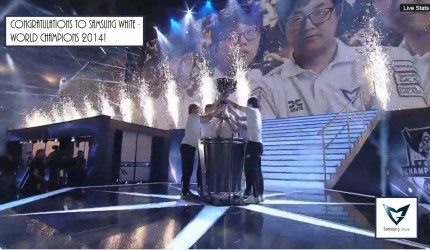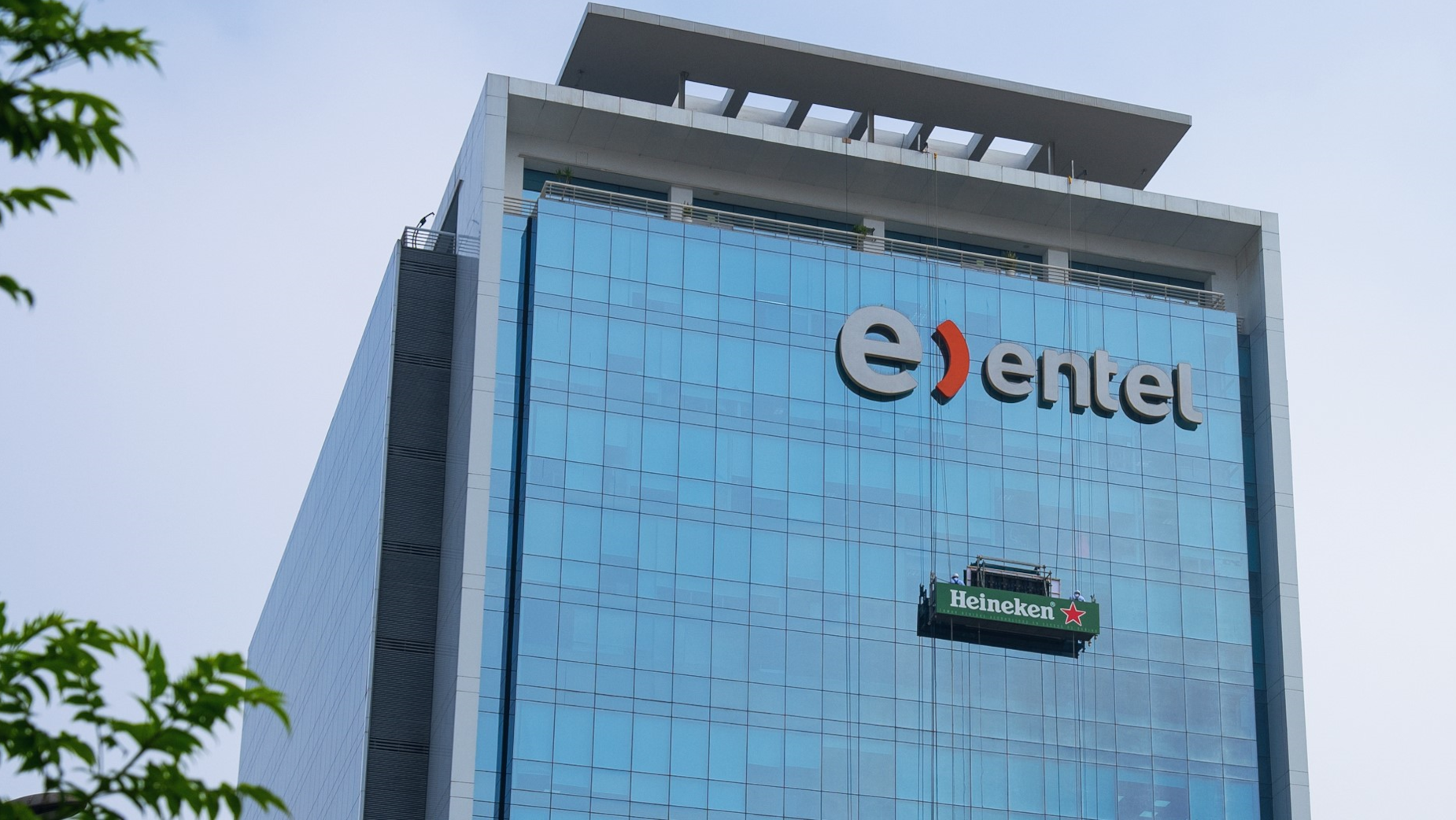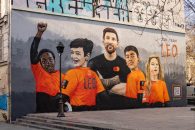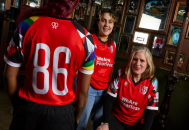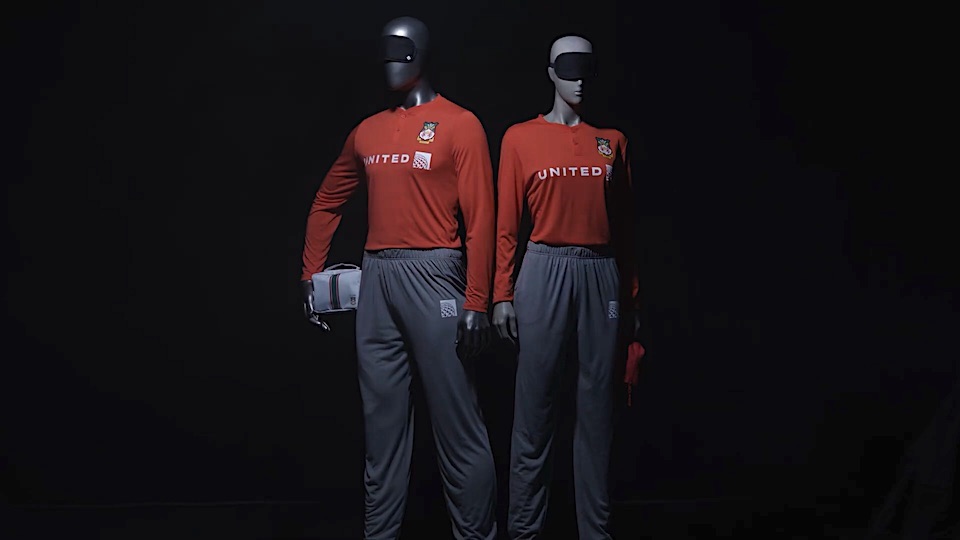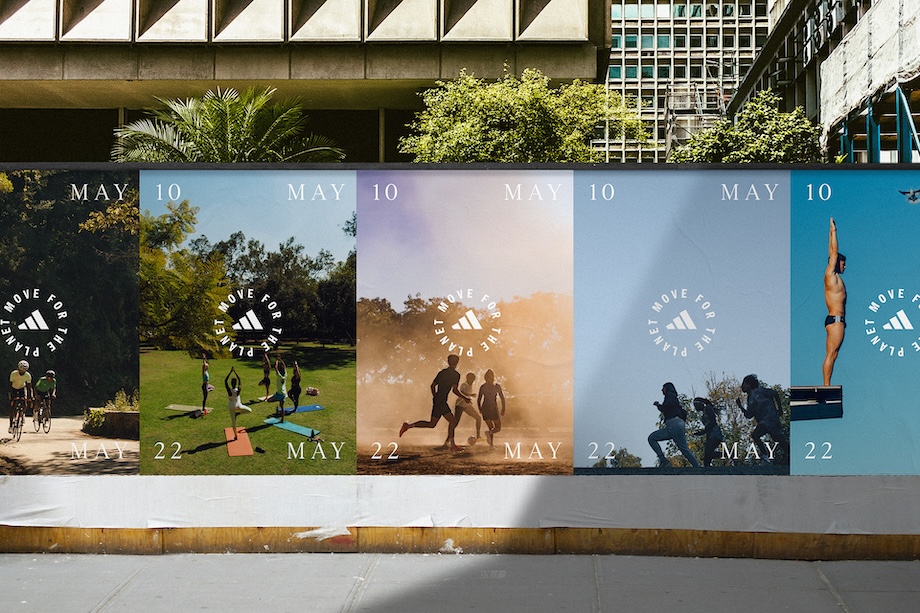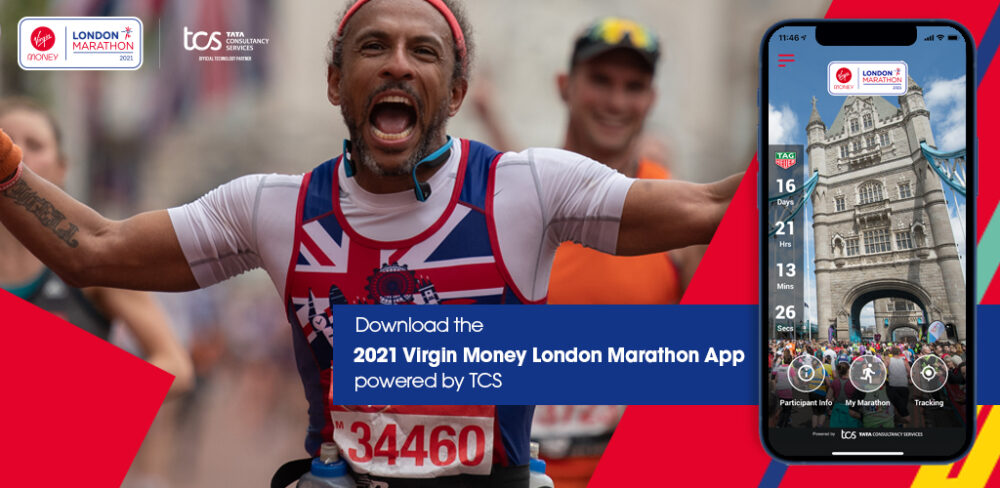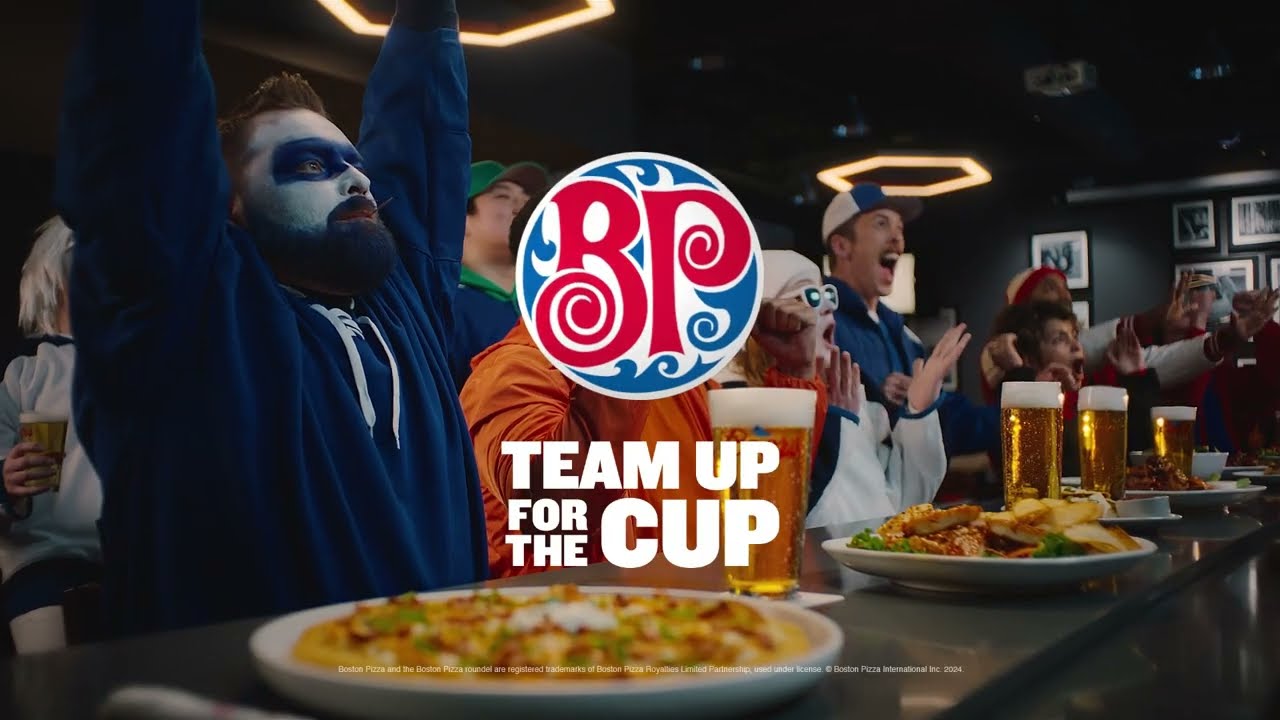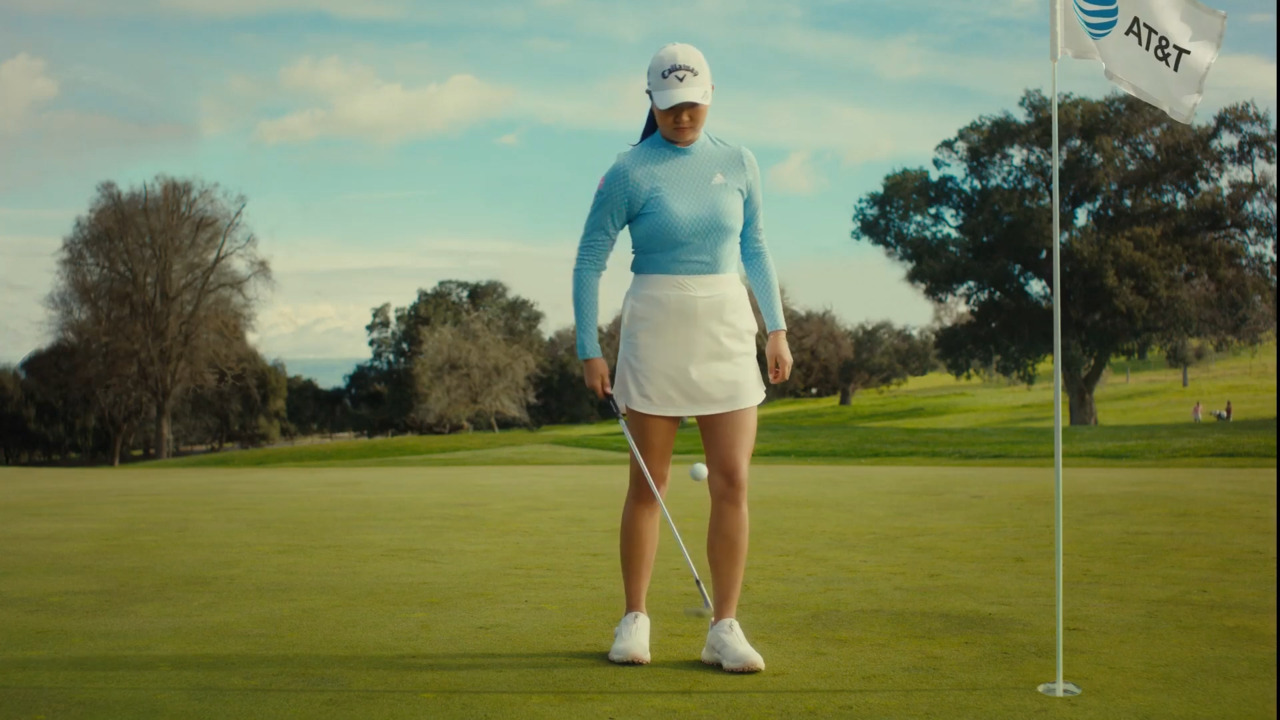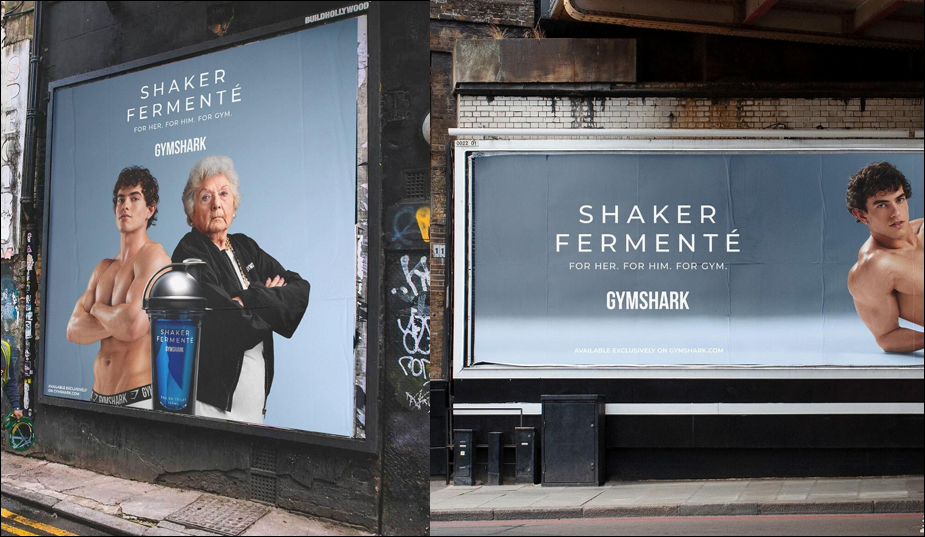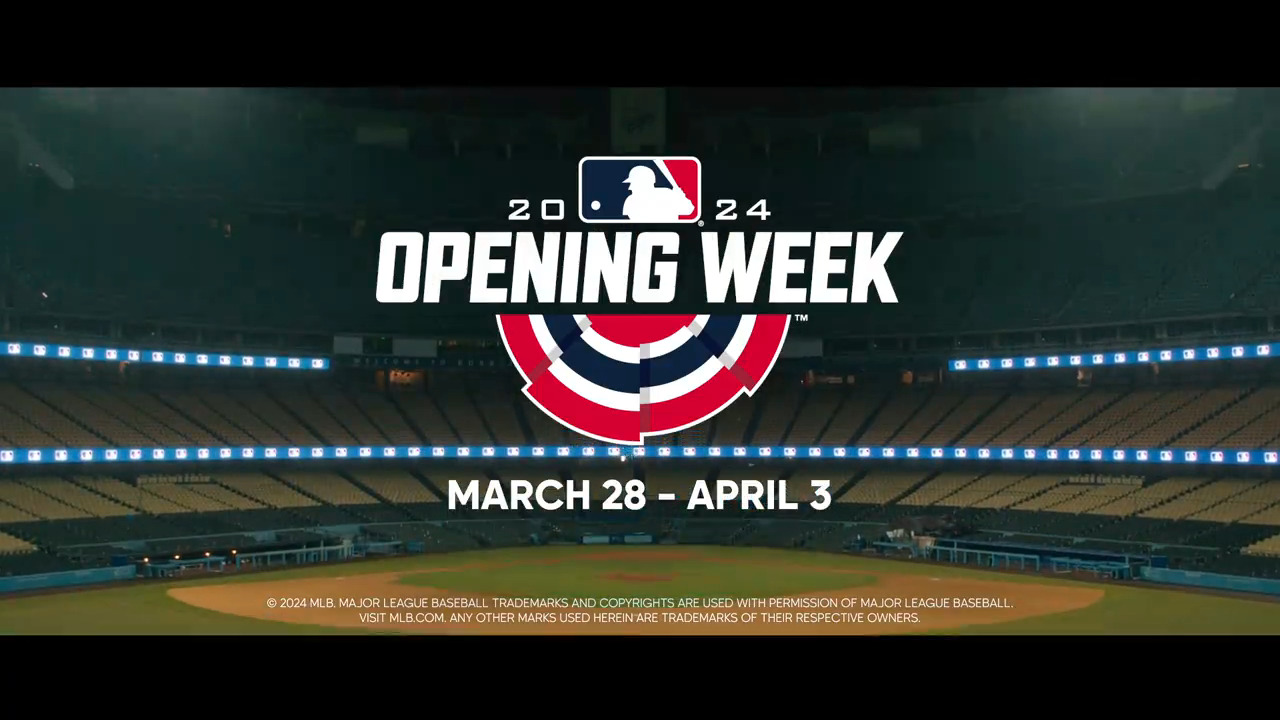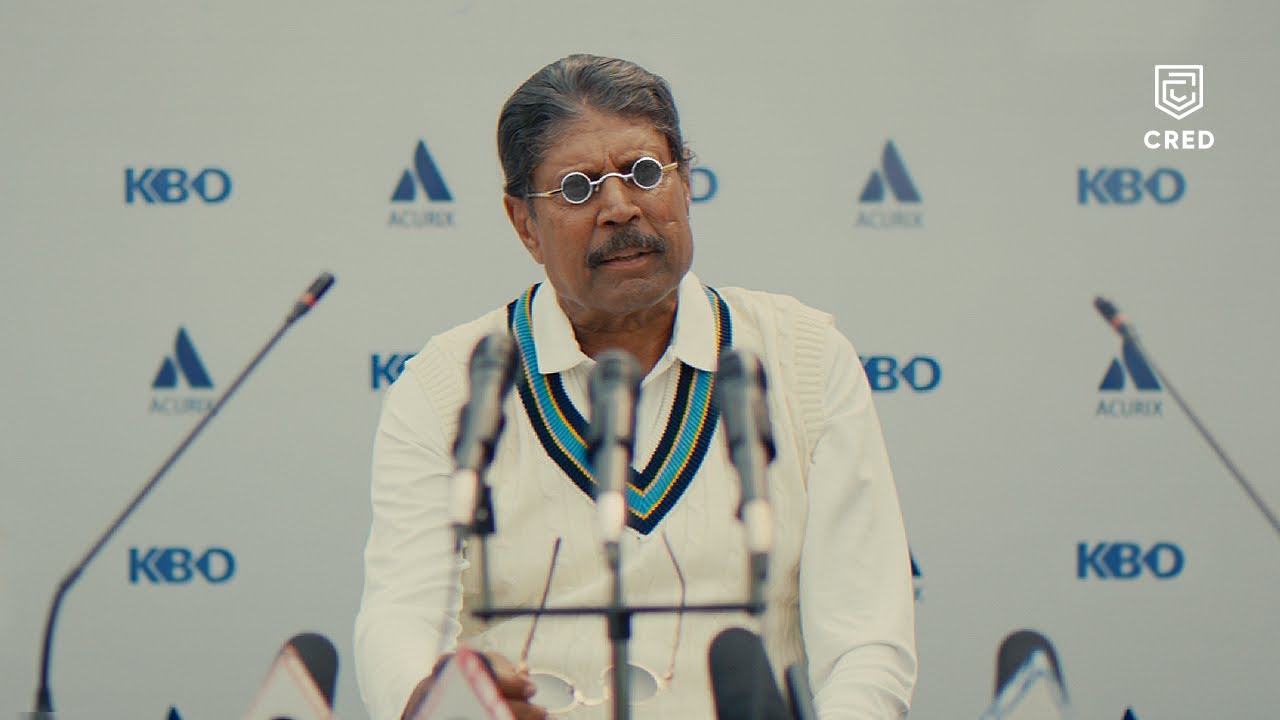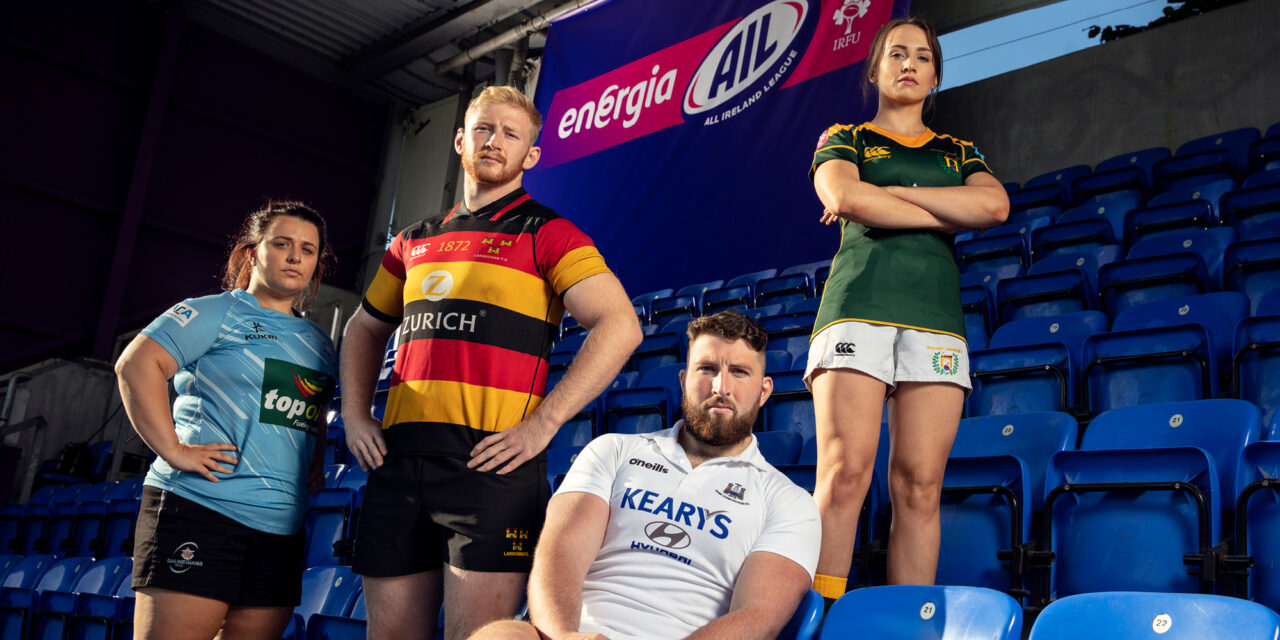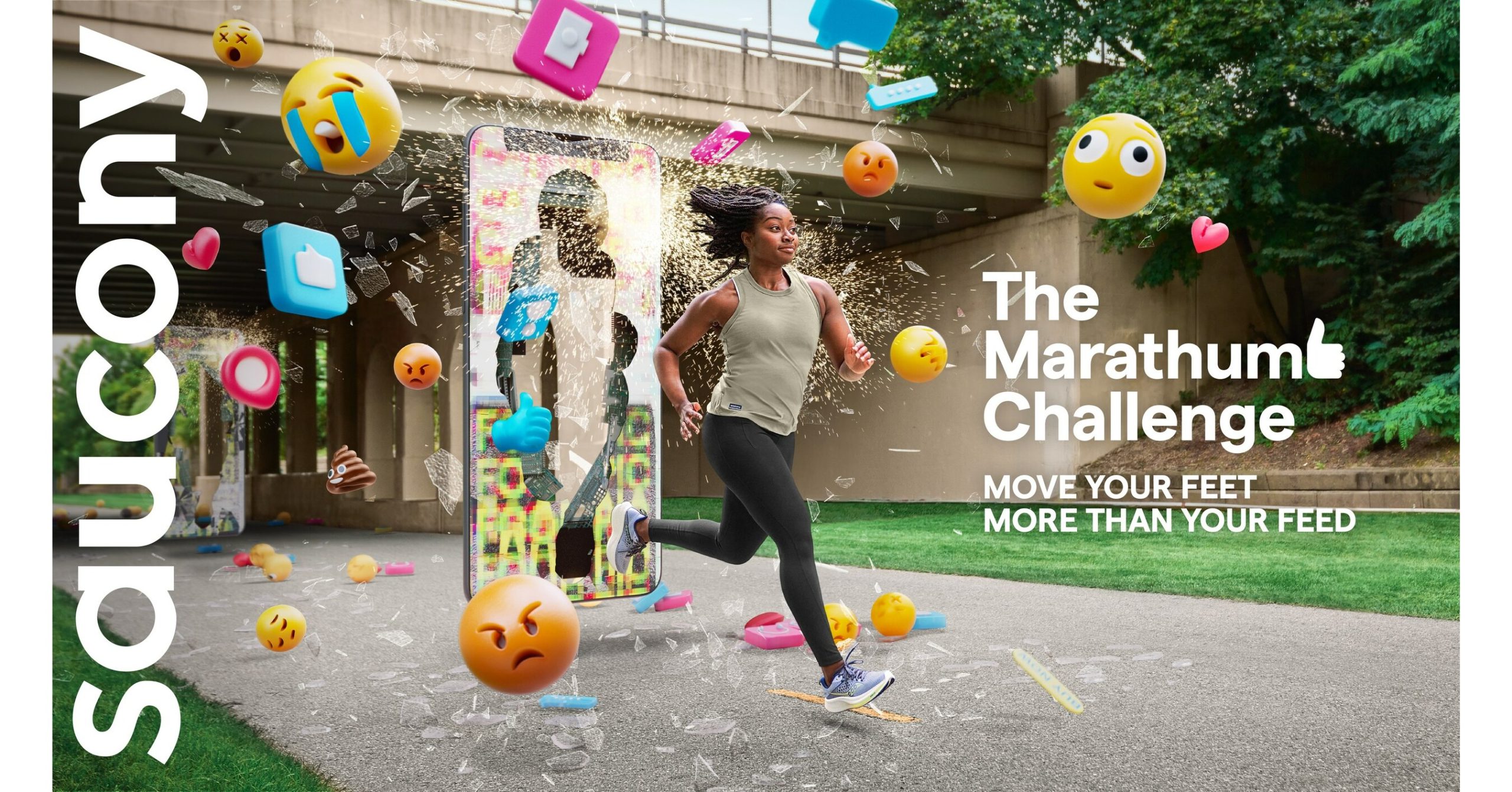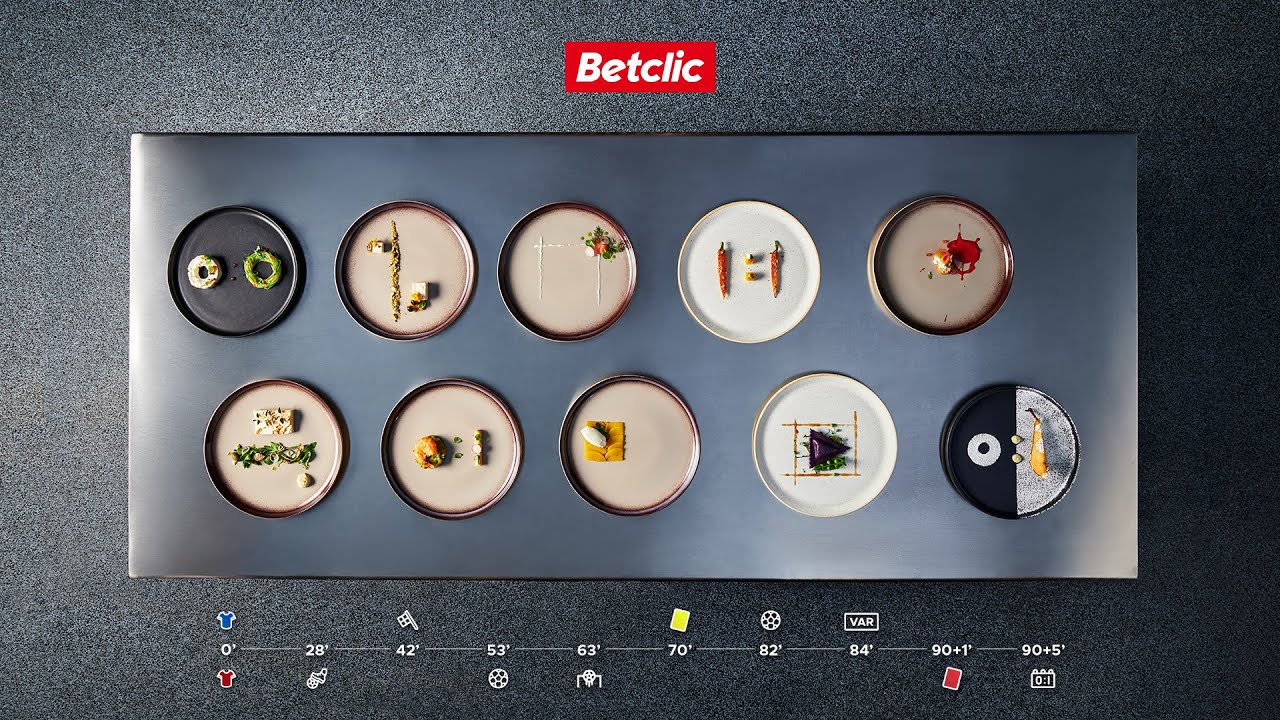Sunday in Seoul saw 40,000 fans fill the city’s soccer stadium (built for the 2002 World Cup) and around 1.5m tuned in on TV to watch Samsung White win the League Of Legends World Championship.
The raucous crowd screamed and cheered at huge live screens showing the five players on the victorious team, sat behind consoles using mice, keyboards and headphones to guide fantastical characters in destroying the opposing team’s base and picking up the $1m prize.
To celebrate the team waved a Samsung-branded flag to the fans in the stadium. Gave interviews to Samsung media channels, wore Samsung branded clothing at post-game PR events and celebrity appearances, while fans and gamers congratulated them across social media and shared victory consumer-created images and videos across the web.
This final was the culmination of a World Championship that kicked off with an innovative alliance between gamesmaker Riot Games and indie band Imagine Dragons’ in the form of a creative World Championships teaser collaboration called ‘Warriors’.
For the victorious Samsung White team this win was a massive improvement after last year’s shock World Championships early exit.
This wasn’t just a victory for Looper, DanDy, PawnN, imp and Homme and their fans, or for League Of Legends creator Riot Games, but also for the South Korean multinational conglomerate that sponsored the winners Samsung.
Samsung Galaxy White, an all-Korean team formerly known as MVP Ozone, has been sponsored by Samsung Electronics since September 2013.
Like Red Bull in F1, Samsung also backs a secondary team – Samsung Galaxy Blue.
Unlike Red Bull and Toro Rosso, these two LOL teams are big, majorly competitive rivals in Korea.
Although, as one might expect from sponsor stablemates, they are fairly friendly with one another as illustrated in this video.
But in-game the rivalry is fierce:
Before the Samsung sponsorship, MVP White and Blue were largely inexperienced players overshadowed by MVP’s more established Starcraft 2 professional squad.
MVP White then changed their name to Ozone when the team found its first major sponsor – Ozone headphones.
Then MVP sold both teams to behemoth Samsung, which has an increasingly strong e-sports background in Korea, for a reported $500,000 – one of the biggest transfers in e-sports history.
As team sponsor Samsung not only offers the players hefty salaries, but also provides professional coaching staff, pays for travel and a ‘team house’ for training and living.
In return it has team title naming rights, a package of commercial appearances, use of the team as brand ambassadors across various product ranges and brand events, plus the team wear Samsung branding and logos on its strips as well as uses Samsung playing equipment (such as Samsung Level headphones).
The brand’s aim is to engage with the 85m players (12m players per day) around the world.
Many of whom fall within the key 13 to 35-year-old male demographic. A group increasingly tough to reach through TV as they turn to events and communication on PCs, mobile devices and consoles.
It is increasingly big business.
With $350m in total gross revenues, League of Legends is not just the most popular game on the planet, but also a hugely popular passion by any standards.
Gamesmaker Riot works with property owners like the European Sports League (ESL), World Cyber Games (WCG), Major League Gaming (MLG) and Intel Extreme Masters (IEM) around the world on League of Legends events.
Riot Games itself offered a total of around $8m in prize money through its global season.
Comment
Huge numbers of fans are now paying money to watch professionals play computer games – so that means sponsors are increasingly active in e-sports.
With the World Championship win it seems Samsung’s investment has paid off.
An important achievement for the Seoul based multinational giant – not least because South Korea is the original home of professional e-sports (dating back to the 1990s) and thus it is a point of national pride.
20-odd years ago the South Korean government, amidst a economic downturn, launched a programme to wire-up the entire country to drive growth via IT infrastructure and then later supported e-sports as it began to professionally organise and go mainstream on TV.
The club game spawned professional leagues and pro live events moved from halls and hotel ballrooms to sports arenas and football stadiums.
By 2004, the final of the StarCraft pro league attracted 100,000 fans to Gwangalli Beach in the southern beach city of Busan.
Millions now watch on TV in Korea, while the country’s biggest Internet portal Naver has its own section covering the results.
E-sport has also grown fast in other countries such as China and the USA and currently around 50% of the world’s 1.2bn players are in Asia while the other half comes from the rest of the world.
Professional e-sports are dominated by MOBA (multiplayer online battle arena) games.
The leading titles are League Of Legends, StarCraft, Dota 2,and Call of Duty.
In 2013 more than $15m in prize money – generated through ticket revenue, media deals, games maker investment and sponsor revenue – was on offer for professional video gamers.
Activision and Microsoft offered $1m to pro Call of Duty: Black Ops II players at one event in LA, while Virgin Gaming awarded $1m to top PlayStation 3 EA Sports FIFA Soccer 13, NHL 13, and Madden NFL 13 players in Las Vegas at the EA Sports Challenge Series.
Valve Software offered the highest ever e-sports prize of $2.8m to the winning players of its DOTA 2 (Defense of the Ancients 2) game at The International 3 in Seattle.
These top professional e-sport players and events are now beginning to attract the same type of sponsors that market to traditional sports fans.
In recent months eSports has seen big companies like Dr Pepper, Nike, Stride, Red Bull, Doritos, Alienware, Qualcomm and Intel jump on the bandwagon.
Even sponsorship uber brand Coca-Cola used the last League of Legends World Championship at the sold-out Staples Center to unveil Coke Zero’s new sponsorship of a new minor league series that will serve as a place for gamers to compete in before going pro (and reflect the brand’s vibrant and authentic youth-focused positioning.
In South Korea, there are eSports-dedicated TV channels and new gaming-focused channels are growing fast.
Twitch TV, a live streaming video platform introduced in June 2011 – which focuses on video gaming in the form of both playthroughs of video games by users and broadcasts of amateur and professional e-sports competitions – runs on both live and on-demand basis and has expanded rapidly.
By mid 2013 it was racking up 43 million viewers per month and by February 2014 it was the fourth largest source of peak Internet traffic in the United States.
In August 2014, Twitch announced it was to be acquired by Amazon for $970m.
Both YouTube and Azubu.tv are also seeing huge growth in livestream gaming – which enables pro players to connect directly with fans.
Will we soon see eSports on mainstream TV and its star players fronting commercials just like football players and NFL stars?
Or, as its fans largely eschew TV for other platforms, will it remain a trailblazer on alternative channels?
Links
Samsung White Facebook
https://www.facebook.com/MvpOzone
League Of Legends Website:
http://lolesports.com
League Of Legends Twitter:
http://www.twitter.com/lolesports
League Of Legends Facebook:
http://www.facebook.com/lolesports
League Of Legends Instagram:
http://www.instagram.com/lolesports
League Of Legends Flickr:
http://bit.ly/lolesportsFlickr
Twitch TV

